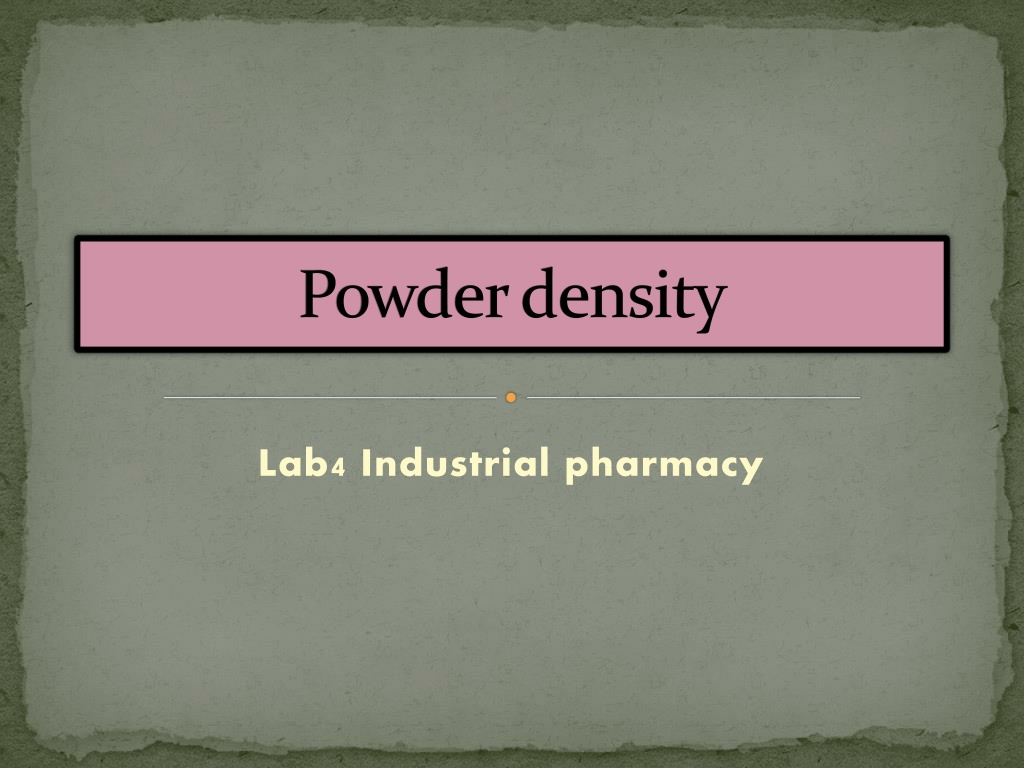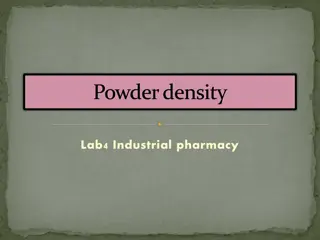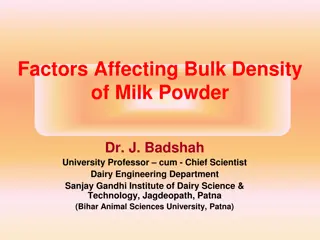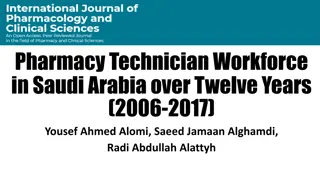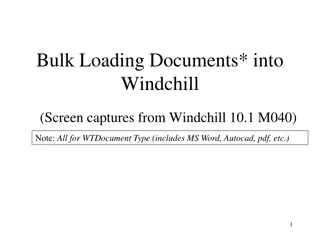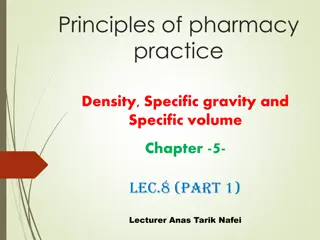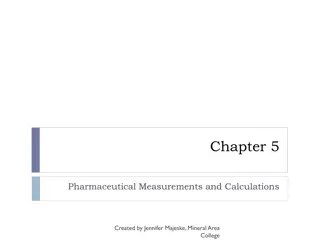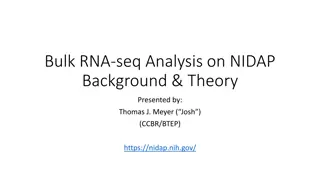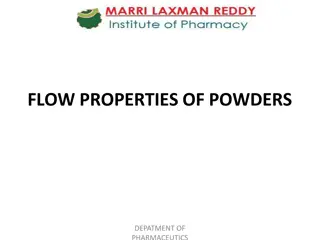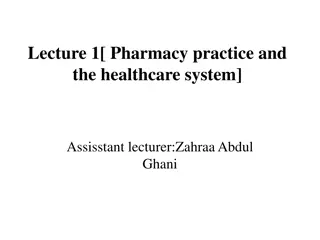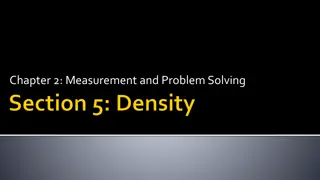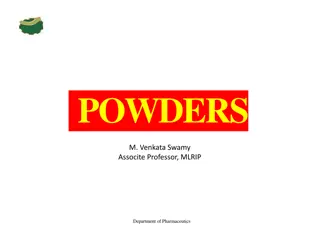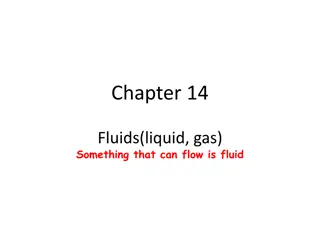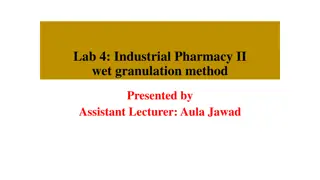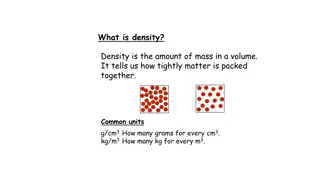Understanding Powder Density and Bulk Density in Industrial Pharmacy
Powder density and bulk density are crucial concepts in industrial pharmacy for measuring the amount of powder in a specified volume. Powder composition, including particles and voids, affects density measurements. Tapped density involves consolidation of powder through tapping, while measuring bulk density involves pouring pre-sieved bulk drug into a graduated cylinder. Different types of tapping methods, such as manual and mechanical tapping, are used to determine density accurately. Tapping density analyzers utilize electric motors for precise calculations. Understanding these principles is essential for quality control in pharmaceutical manufacturing.
Download Presentation

Please find below an Image/Link to download the presentation.
The content on the website is provided AS IS for your information and personal use only. It may not be sold, licensed, or shared on other websites without obtaining consent from the author. Download presentation by click this link. If you encounter any issues during the download, it is possible that the publisher has removed the file from their server.
E N D
Presentation Transcript
Powder density Lab4 Industrial pharmacy
Powder bulk density http://upload.wikimedia.org/wikipedia/commons/thumb/a/ab/Measuring_cylinder_hg.jpg/220px-Measuring_cylinder_hg.jpg It is simply expresses the amount (usually weight or mass) of a specified volume. powder in a
Composition of powders and there relation with volume Powders are composed of: particles and voids. The volume occupied by a given number of particles depends on how closely theyare packed. The packing of particles depends on: A- shape B- cohesiveness C- short-range motion D- external forces.
Tapped density Describe the bulk-density of a powder (or granules) after consolidation/compression ("tapping ) the container of powder a measured number of times, usually from a predetermined height. The method of "tapping" is best described as lifting and dropping.
Measuring Bulk density Is determined by pouring pre-sieved bulk drug into a graduated cylinder via a large funnel and measuring the volume and weight. Measuring tapped density Tapped density measured by tapping graduated glass measuring cylinder manually or by mechanical device. (the total capacity of the cylinder to be used, and the readability of its scale are stated).
Types of tapping: 1. Manual tapping 2. Mechanical tapping 1. Manual tapping: The raising and lowering of the cylinder by hand is done either without reference to the height traversed and arbitrary acceleration in both upward and downward directions; the hand remaining in contact with the cylinder at all times (hand tapping). (The cylinder containing the powder is tapped by repeatedly striking its base down onto a hard surface).
2. Mechanical tapping Tap Tap density density analyzers Use an electric motor to turn a cam under a specially constructed cylinder holder. The holder secures the cylinder to a vertical shaft which runs in a low friction bearing. analyzers (tap (tap density density testers) testers) The tapping rate is expressed in taps per minute; the rate being typically a few hundred. The actual rate is determined by the rotational speed of the cam under the shaft/platform.
Digital or electromechanical counters are usually incorporated in the device to automatically stop the cam rotation after a predetermined (yet adjustable) number of taps. The height through which the container falls is (drop height or stroke). It is set by the distance between the highest point on the cam and the striking surface.
Howtocorrectthedensityproblem: Milling Slugging Formulation 1. 2. 3.
Benefits of bulk density: Important in the consideration the size of high dose capsule product. The homogeneity of a low dose formulation in which there are large differences in drug and excipient densities. knowing the dose and formulation density to determine the appropriate size for a capsule formulation.
Tapped density and powder flowability The change in tapped powder volume (related to flow properties of powders) It can be determined by compressibility which is computed from powder density using the following equation: % compressibility = t o/ t 100 ?t- tapped density ?o- bulk density
% compressibility Flowability <10 Excellent 11-15 Good 16-20 Fair passable 21-25 26-31 Poor 32-37 Very poor More than 38 Very very poor
